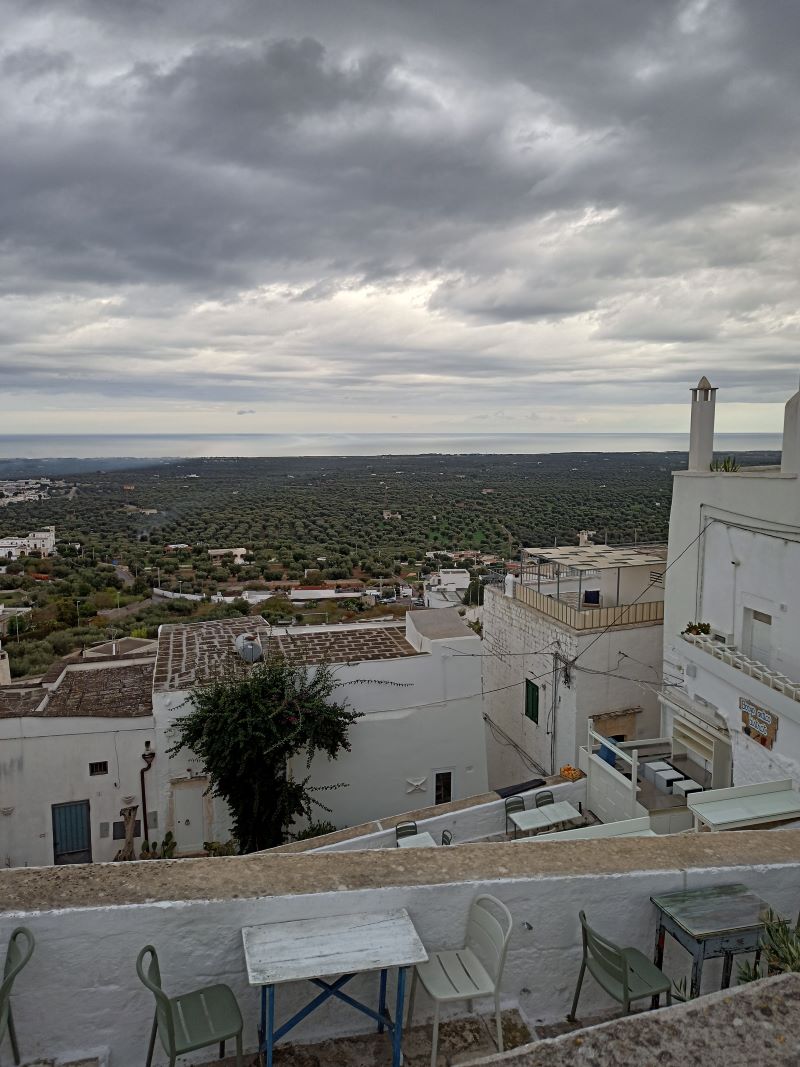
When you are a Later Gap Traveler, living abroad and not just vacationing, you have time to explore and thoroughly enjoy your surrounding area. In fact, you have the opportunity, if you take it, to spend a lot of time in all the little towns and villages nearby. We have tried to do so. And, after living in Italy for over two years, we are pretty well versed on Tuscan hilltop towns. Don’t get me wrong – we still love them and on workday afternoons or short (two-day) weekends, we still look around for new little alleys, wineries, and osterias. But on longer (three-day) weekends, we try to move our adventures further afield. Early November, Veterans Day, offered such an opportunity, so we grabbed it with both hands.
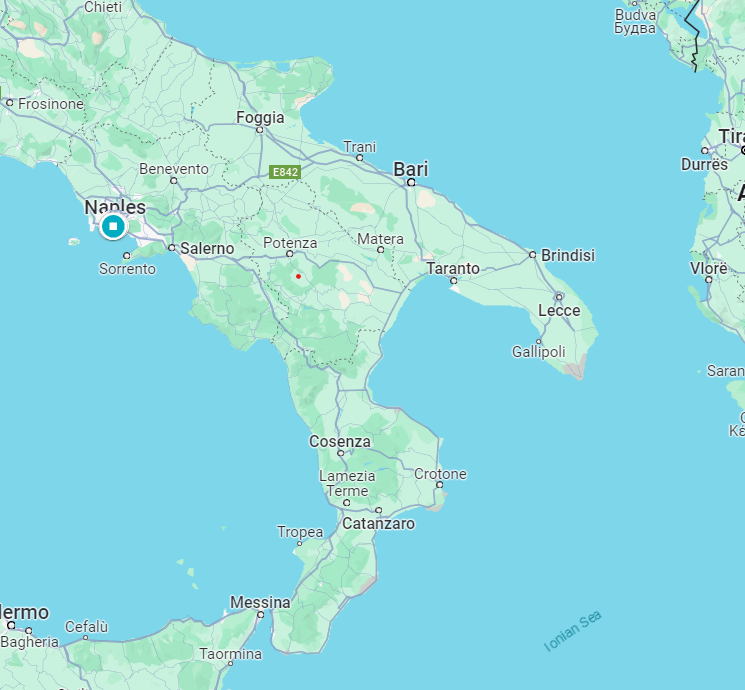
One area of Italy that we had always wanted to see, even when we lived in England, was the heel of the boot (BTW, it looks like a stiletto). With three days and a short flight (only one hour from Pisa), we decided to explore the area, and not limit our adventure to one town. We also decided to try something new to help decide what we needed to see and do. Before turning to our usual array of YouTube videos and blogs, we turned the question over to AI – we asked ChatGPT, “What are the best things to do on a 3-day trip to Puglia Italy.” In 10 seconds, we had a three-day itinerary, and off we went to do our own further research.
Getting There and Around
The first thing we figured out was that the plan was aggressive. AI must not need to rest much and must wander, eat, and wine taste at a much quicker pace than we do. The plan included two towns each day, no time for a winery, and little time to check out any other sites – which we picked up by Googling the same question and searching on YouTube. We put everything together and decided to head south and give the suggestions a try. We booked our flights on Ryan Air, not too expensive but prices seemed to be going up. (Quick side note, we have found that if you check prices several times on Ryan Air, the prices will go up, even on the same day. We think they track your, or overall, “interest” and charge accordingly.)
We also booked a rental car (AI’s suggestion required plenty of driving) and found a decent deal. (Another side note – we have rented in several places in Europe. Cars are typically pretty reasonable, better than most places in the US). For this trip, we booked with Locauto, which we found through another Google search and a couple of travel sites. There are some sketchy reviews on the web, but as with all rental companies over here, make sure you try and read the fine print and do a good pre- and post-rental walkaround with the staff. We have been bitten before with shady charges and attempts to pass off “damages”. As with most things, not just when living abroad, trust but verify.
Monopoli

On arrival to Bari, we grabbed our car and started along the route of AI’s “suggested” itinerary. We had used our other “research” to find our own towns to obtain accommodations. The first night we booked an Air B-n-B in Monopoli; we didn’t pass Go and didn’t go directly to jail. After asking our hostess for dinner recommendations, we wandered for a bit and settled in for a bite. The restaurant was local, just like we like it.

At dinner, we decided AI was a little more aggressive than our taste (we are at the stage of smelling the roses) and we would cut out one day of the plan. We dropped out the southern portion of the itinerary; we cut a few inches off the heel. We figured we could fly back to Brindisi (which is further south) inexpensively on a regular weekend (since we already did some exploring) to catch the portion of ChatGPT’s agenda that we missed. (Quick update – some friends decided to come visit. They also previously lived in Europe for many years but had never been to the stiletto either. They are coming over in May, and we are picking up the piece we cut off.)
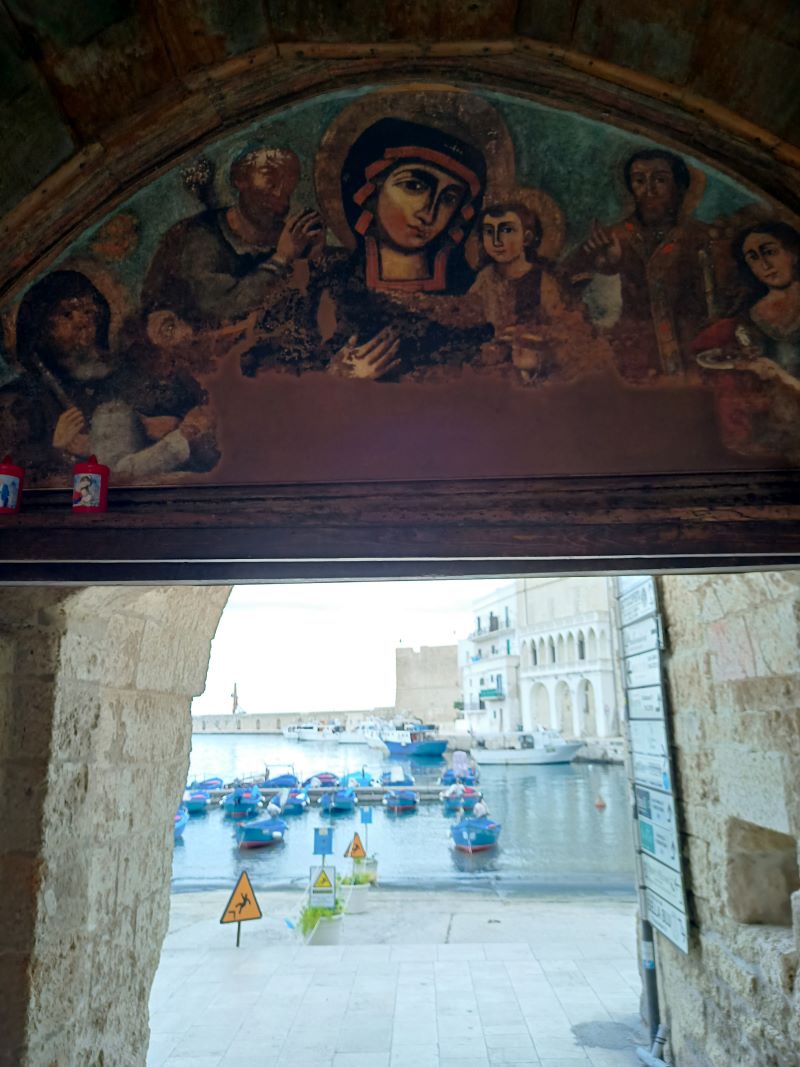
On our first full day, we started by walking the streets of Monopoli. Exiting our room, we turned left down a little alley – I mean a little alley, I had to basically walk sideways. I was glad I had skipped the secondi (the second plate at dinner) or I might not have made it. Monopoli has a very iconic little harbor, filled with lines of blue wooden fishing boats. There was a neat old gate leading out from one of the streets to the harbor area. Looking through the archway, you could see a painting of the Virgin Mary above the far door – there to grant blessings on the fishermen on their way out to sea; it looked like it had been there for many, many years. The boats are still used, not just for tourists but to actually bring in the day’s dinner.
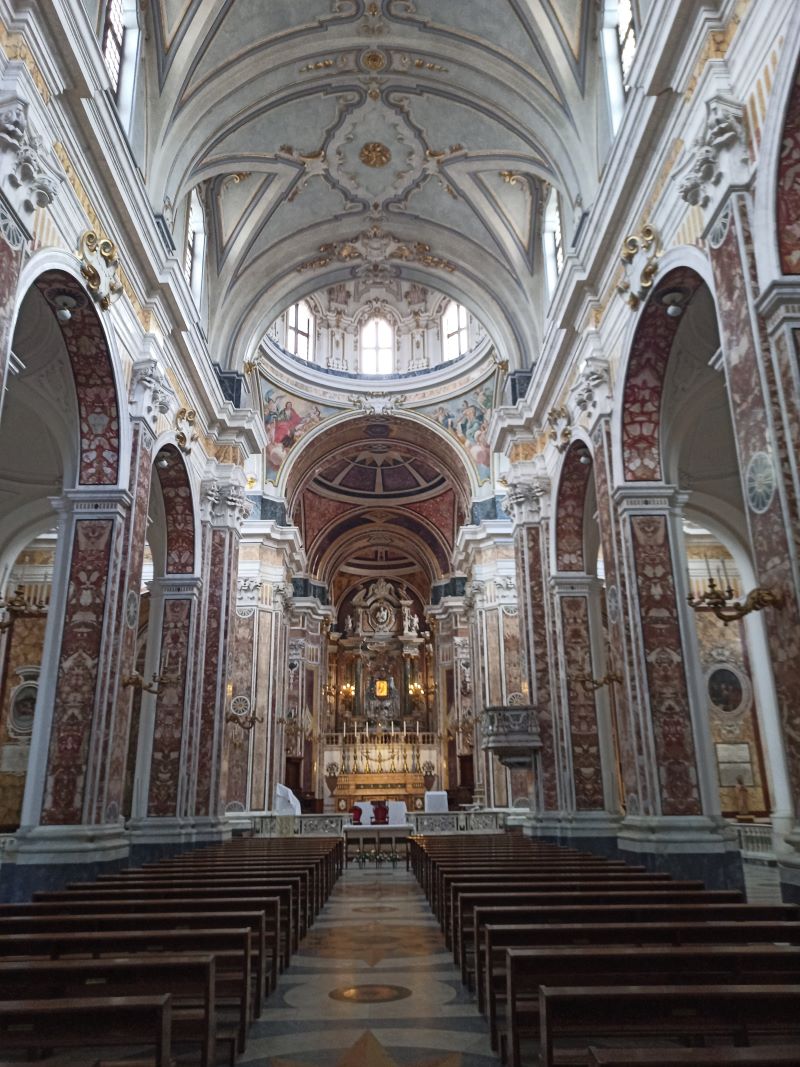
After walking around the harbor area, we wandered up to the cathedral. There are several old churches in the town (as there are in most Italian towns) and we headed for the Cattedrale Maria Santissima della Madia, a Romanesque church, originally dating back to the 12th Century. The interior is built with various types of marble, making it an overall impressive structure. After a nice wander, we headed back to the old town for a quick bite of lunch, we chose a sandwich instead of our usual antipasti, primi piatti (pasta), and a bottle of wine – we had a little drive in front of us and we didn’t quite know how many more little towns we might stop in along the way. Our destination for the evening was Ostuni, one of the places recommended by both ChatGPT and our plethora of bloggers and YouTubers that we typically turn to.
Ostuni
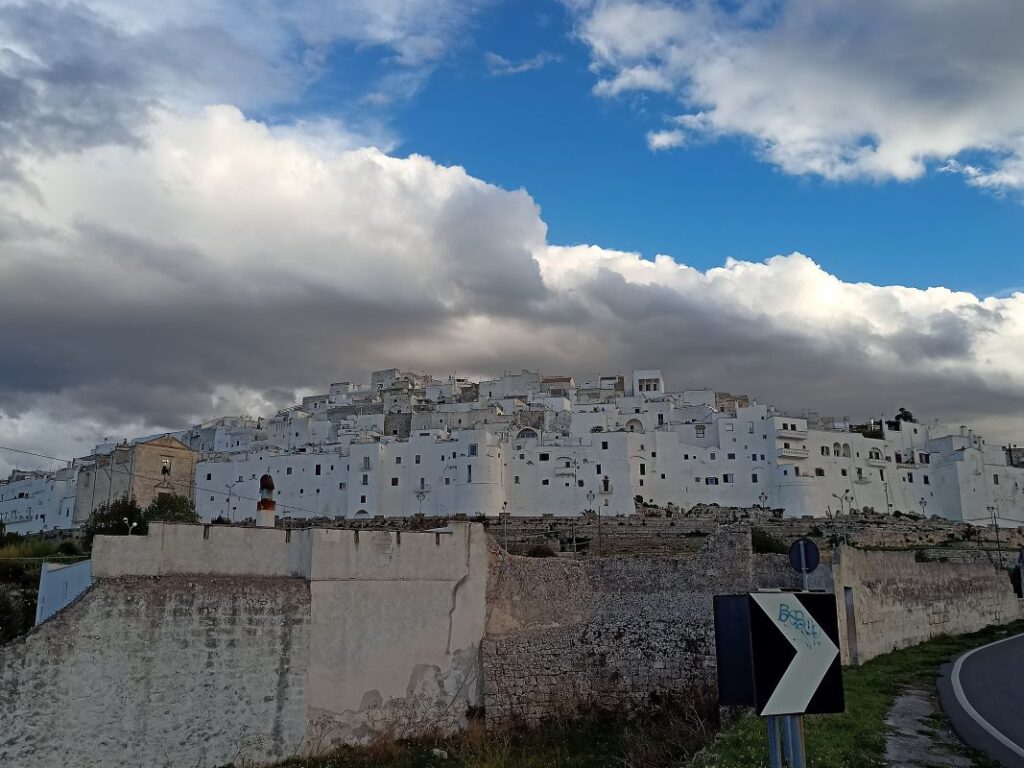
Ostuni is a beautiful white city on top of a hill – we had left our Tuscan hilltop towns for one in Puglia. Although there are streets through the city, and some folks can and do drive, most of the area is Zona Contralato (Controlled Zone) which means no driving without a permit – we found this out the 60-euro hard way during our first week in the country when I managed to accidently enter one in Pisa. Our host recommended a free parking area right outside of town – it was an apartment complex and we just parked among the folks who lived there.
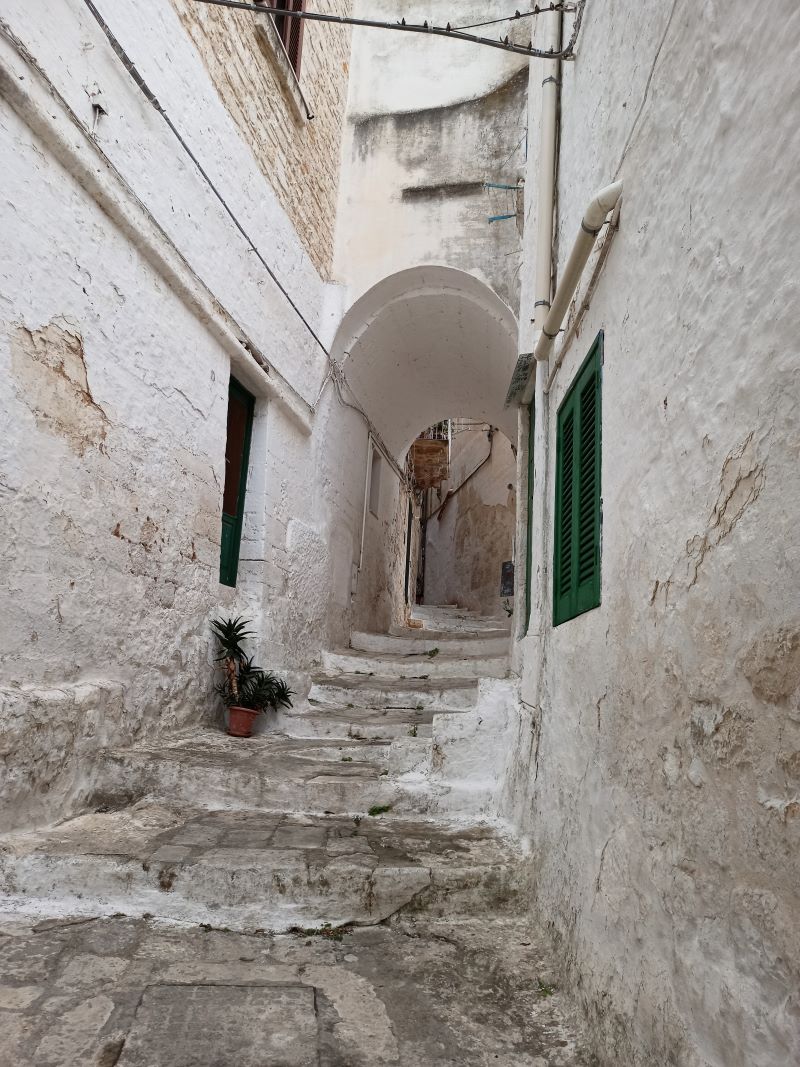
Being a hilltop town with us parking outside the gates meant that we were walking up to find our lodging, after a full day’s drive and loaded down with our luggage. After living in the area for a while, we were aware and have become rather adept at packing light and mainly bringing backpacks – you can tell the tourists because they are the ones dragging large suitcases with wheels up and down the cobblestone streets. They are truly evident in July and August when they are also sweating and a bright shade of red.
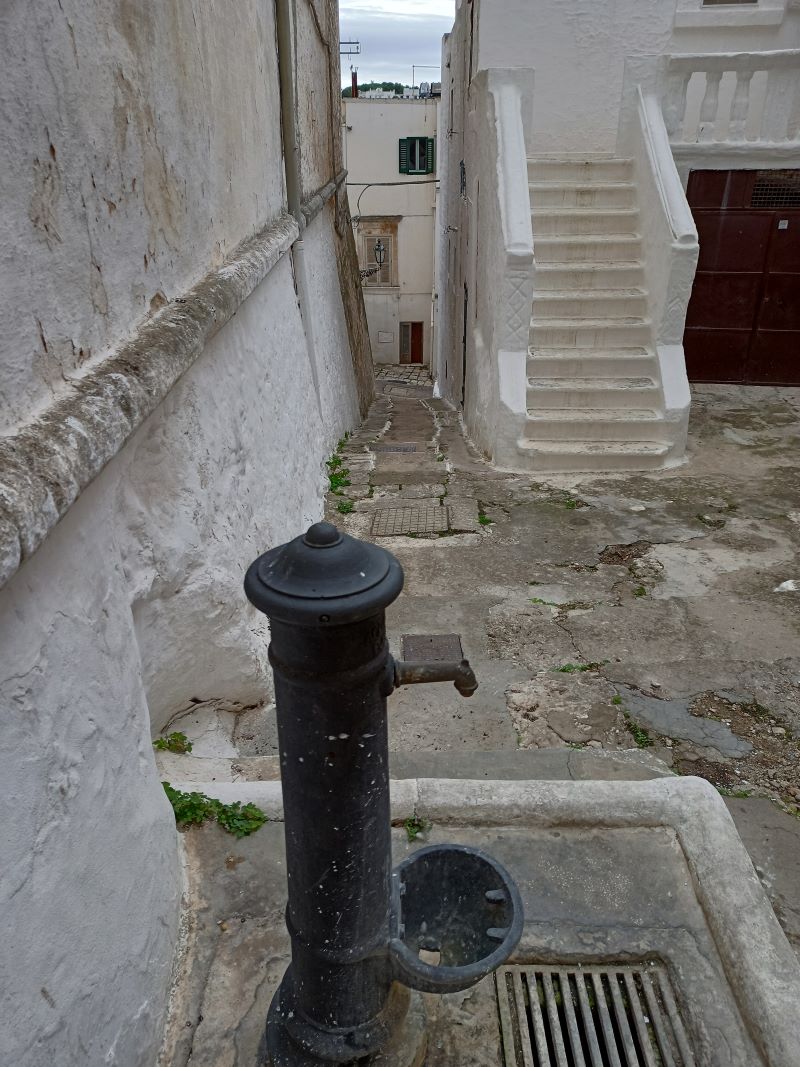
On our first evening, we wandered the streets to get a feel for the alleyways. As I mentioned, Ostuni is on a hill; what I left out was that it was not on a mesa – the building area wasn’t flat, making the entire town a series of small alleys and stairs winding up one side and down the other. It was early November – tourist season was over, and like many small Italian towns, things were closed up for the winter. Many restaurants weren’t open, or were only open on certain days. We managed to find a small place on the backside of town – I saw a sign for a restaurant and pizzeria pointing up a little alley and we followed it to an area with a dining area, a pizza place, and a small bar – all owned by the same folks and with a nice outside eating area. We decided to try the pizza. They sat us at the main restaurant, brought us little “presents” (many restaurants bring you a small individual appetizer when you sit down), and took our order. They had to run up the hill for the pizza. We sat outside, under a couple of blankets and a heater (they probably thought we were crazy) and enjoyed the evening. After dinner, we strolled down the hill to the main square to find out if anything was going on in town and then retired with our plan to drive to a couple of the smaller towns in the area the next day.
Alberobello
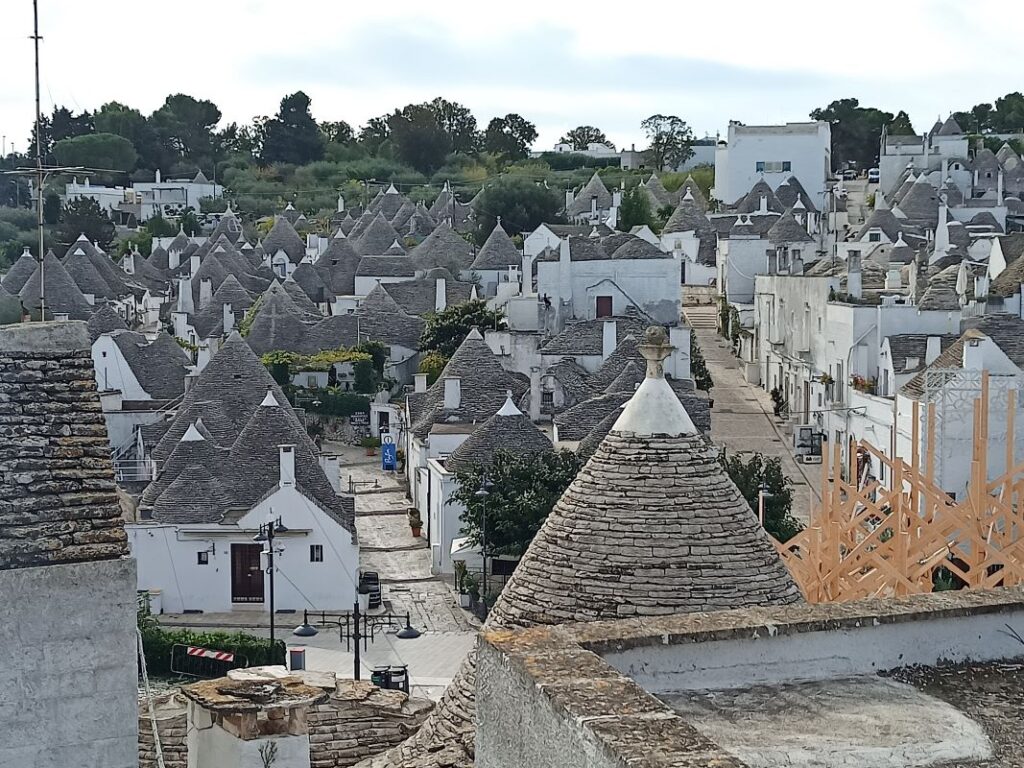
The next morning, we got up and hit the streets for a cup of coffee at the crack of 9. I think we were the first ones out, the coffee shop was just opening and they were busy picking up trash and cleaning the streets (they weren’t very dirty, and the cleaning wasn’t going very fast – the cleaner actually came in and had his shot of espresso and a visit before moving on.) We planned to visit a couple of towns in the area within about 30 kilometers, the drive took about 45 minutes due to the roads. Our first stop was Alberobello, a way cool village filled with Trulli houses and pretty high on the UNESCO World Heritage list.
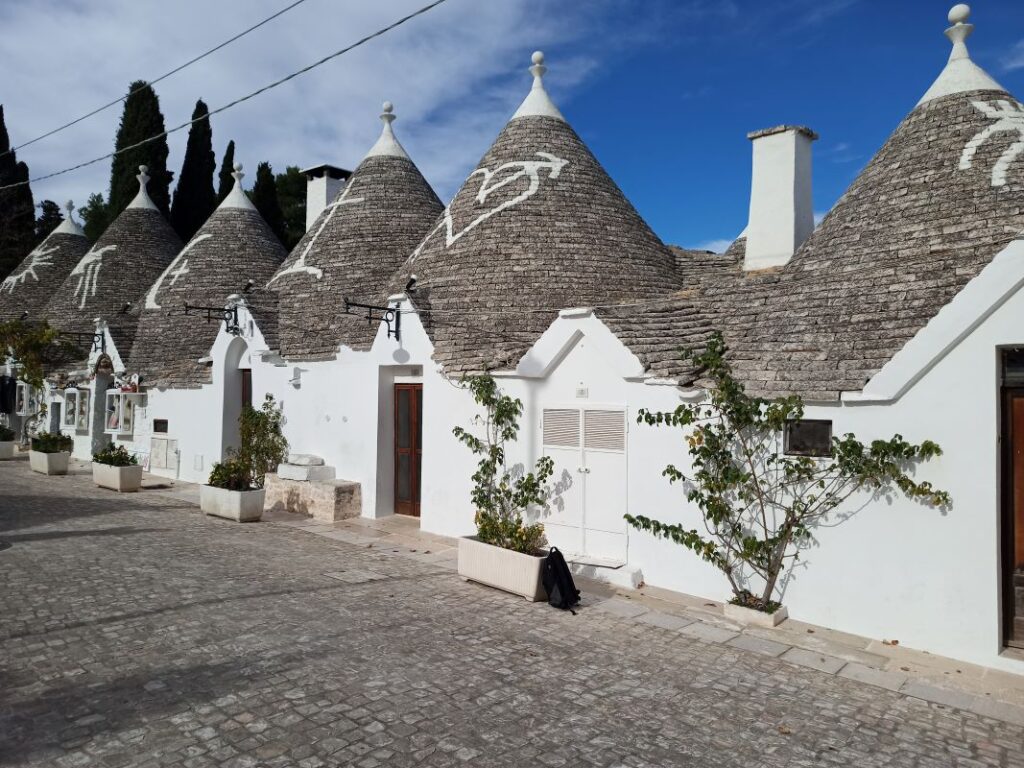
The houses are small conical-shaped dwellings with peaked roofs covered in symbols. Some symbols denote early Christians, others represent pagan protections, and I think some just look cool. One of our initial ideas (from the AI and blogging suggestions) was to stay in one of the houses. However, after a couple of hours walking through the area (and feeling it get more and more crowded with busloads of other tourists) we figured we had seen all there was to see and were glad we were moving along. Even though we live here, our time is limited, and we wanted to see a little more of the area.
Locorotondo
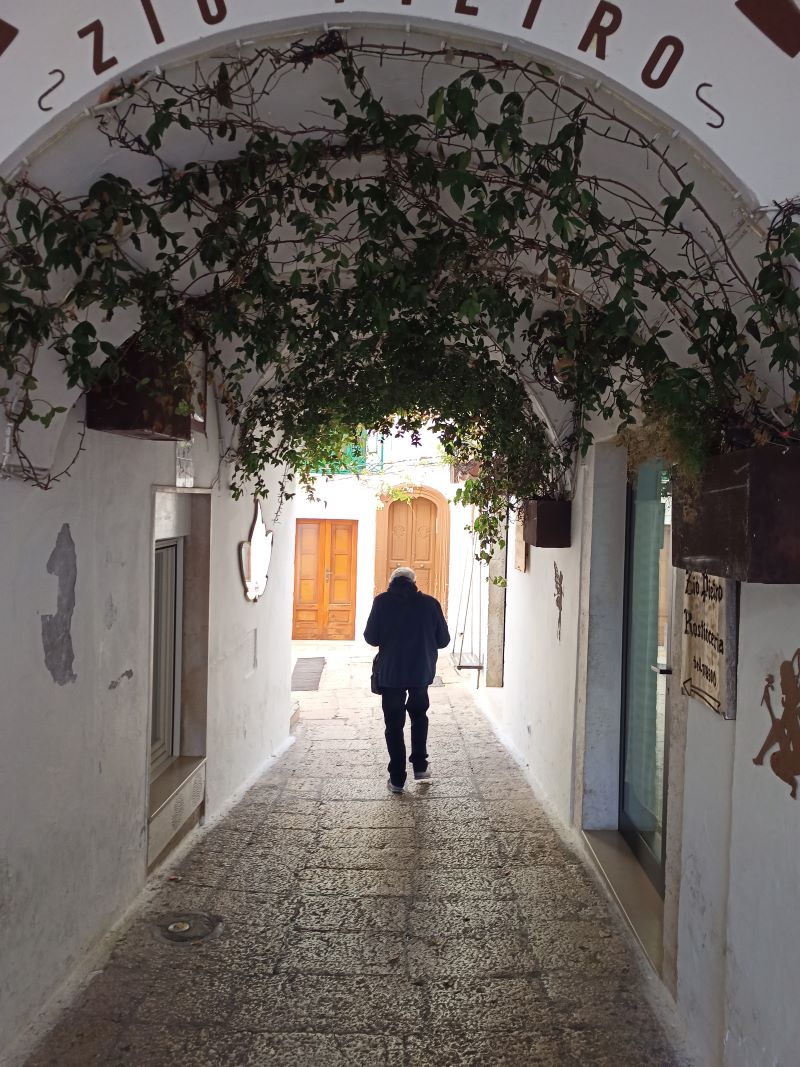
As the town filled up, we left Alberobello and moved on to Locorotondo. This was another small town, composed of a maze of whitewashed houses and buildings, crammed together around a central cathedral, and surrounded by a much newer buildup. We were there to see the historic center, so we parked outside and walked in. Similar to Ostuni, many of the restaurants were closed, especially for lunch. After poking in and out of some of the streets and shops, we found a cute little place tucked away down a small little alleyway.
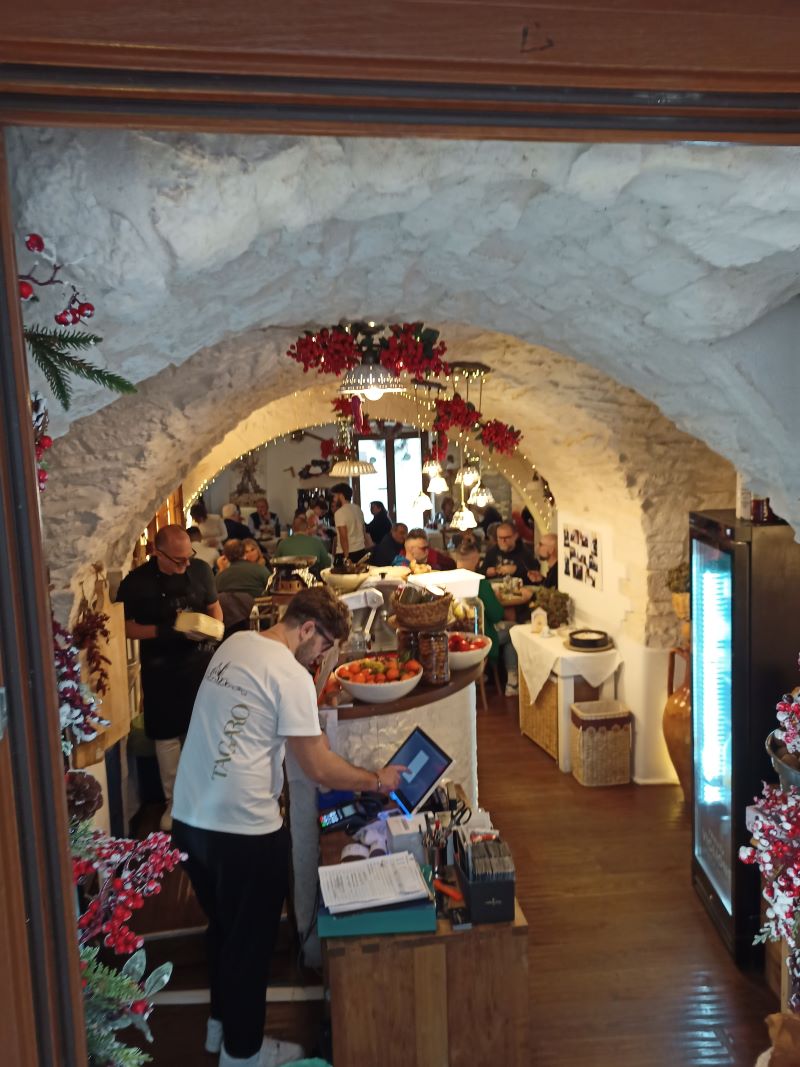
It was one o’clock and there were only a couple of tables filled. I asked if we could eat and the waiter said he had to go ask the owner – I thought, “It’s empty, not much reason to ask.” He came back and said they had one table, in a corner by the restroom – although we saw many tables open. We took the one offered and sat down. We ordered an antipasti, a couple of primi piattis, and a bottle of wine and sat back to enjoy what looked to be a quiet lunch. However, by around 1:30, people started streaming in, that must be when they eat lunch in Locorotondo. Soon all the tables were full. We continue to learn that even though a place looks like it has open tables, smaller Italian restaurants usually do one seating – and what looks empty early can soon fill up.
Wine & Olive Trees
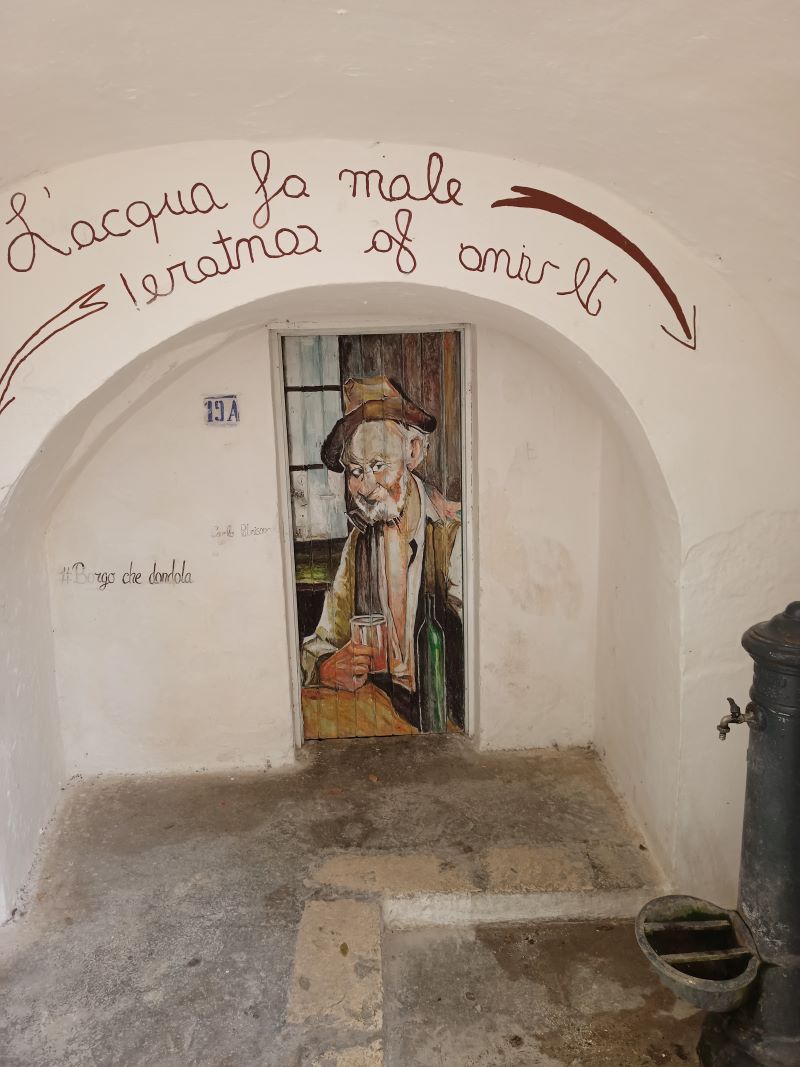
During lunch, we did some searching for a winery in the area – we wanted to try the Puglian wines. As we do with our travels, we also tend to look for a winery, or restaurant, pretty late in the planning process – usually it works but sometimes we end up having a “discussion” about why we didn’t check earlier. We found a small, family-owned winery, L’Essenza di Puglia – they do individualized private tours and tastings as they don’t believe in the mass market approach – and booked a slot. When we drove up, we were met by the owner (actually the vintner, his wife’s family owns the estate). He gave us a tour around the vines and through the olive grove.
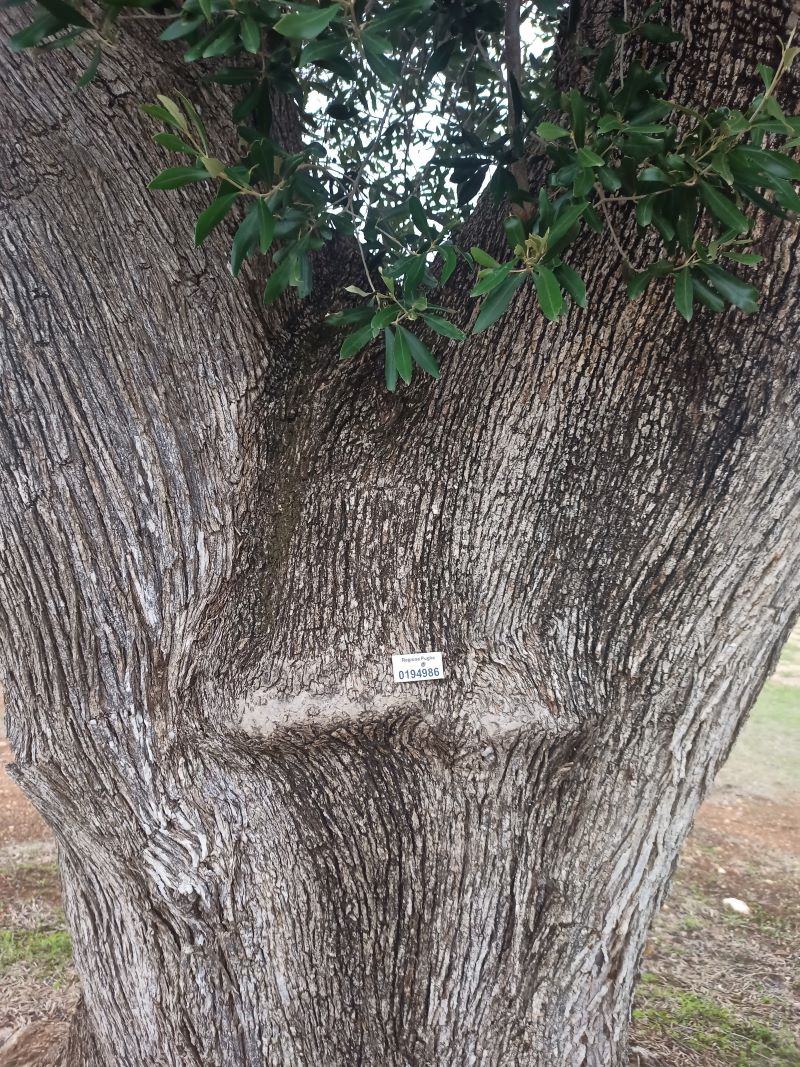
We learned that all olive trees in the region are numbered and registered – it takes governmental permission to cut one down. Also, you can get an idea of an olive tree’s age by measuring its circumference – in the Puglia area (slow-growing) each meter (or foot of diameter based on geometry, C = Π * d) equates to around 100 years. (This is only approximate – for a more detailed discussion of olive tree aging, you can read LandArchConcepts Blog or Olive Tree Age Calculator). Some of the olive trees at the property were around 200 – 300 years old. After learning about the trees, we went in and sampled several of the wines, paired with flavored olive oils from the trees. The combination was interesting – heightening the flavors of both and leading to another unique experience. After purchasing a few bottles of wine and three bottles of infused olive oil, we headed back to Ostuni for the evening.
Evening in Ostuni
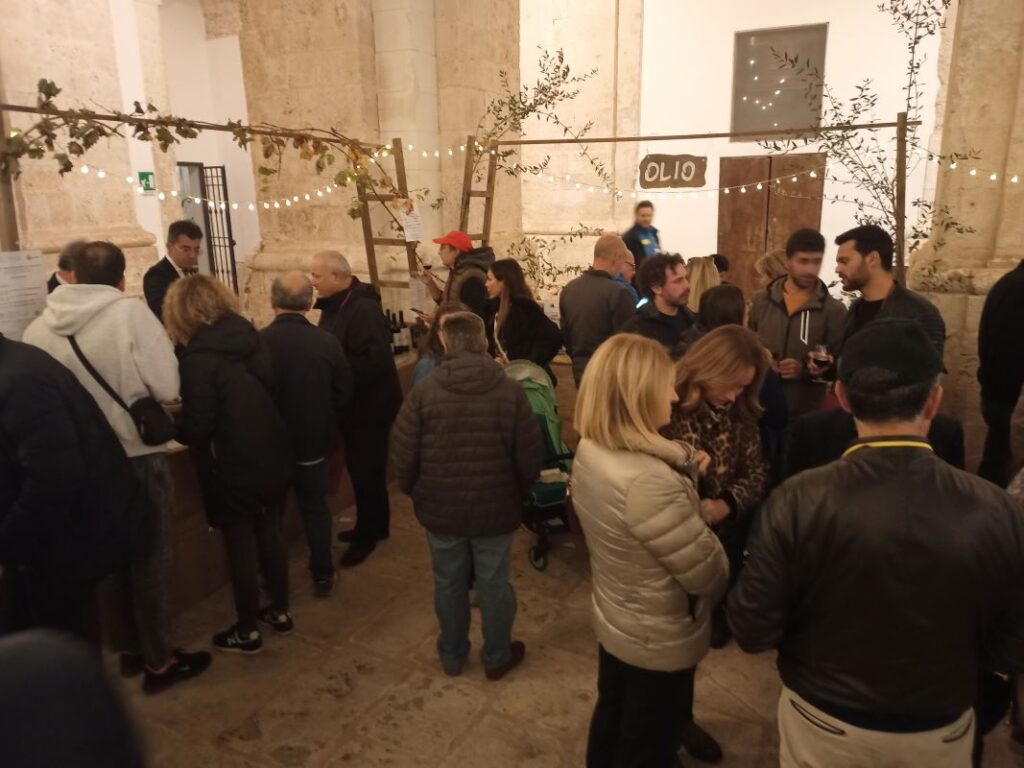
After cleaning up, we headed out for a stroll (or a “passeggiare” as it is called in Italy – they all do it, probably why they live so long). We wandered down the hill, across the square to the other side of town, and then back to the center, where they were just opening up a local wine and olive oil festival. It looked interesting so we stopped by. Several booths, some with tables full of wine, others with various olive oils, and still others with wicker and wooden handicrafts were set along the walls. The center of the hall was filled with chairs (and people in them) and in front was a long table with a panel – they were discussing something, probably about wine or olive oil but we had no clue as we still struggle with the language. We hung around for a little bit, then wandered out and back up the hill to the restaurant we had enjoyed the night before – again it did not disappoint.
Poliagno and Home
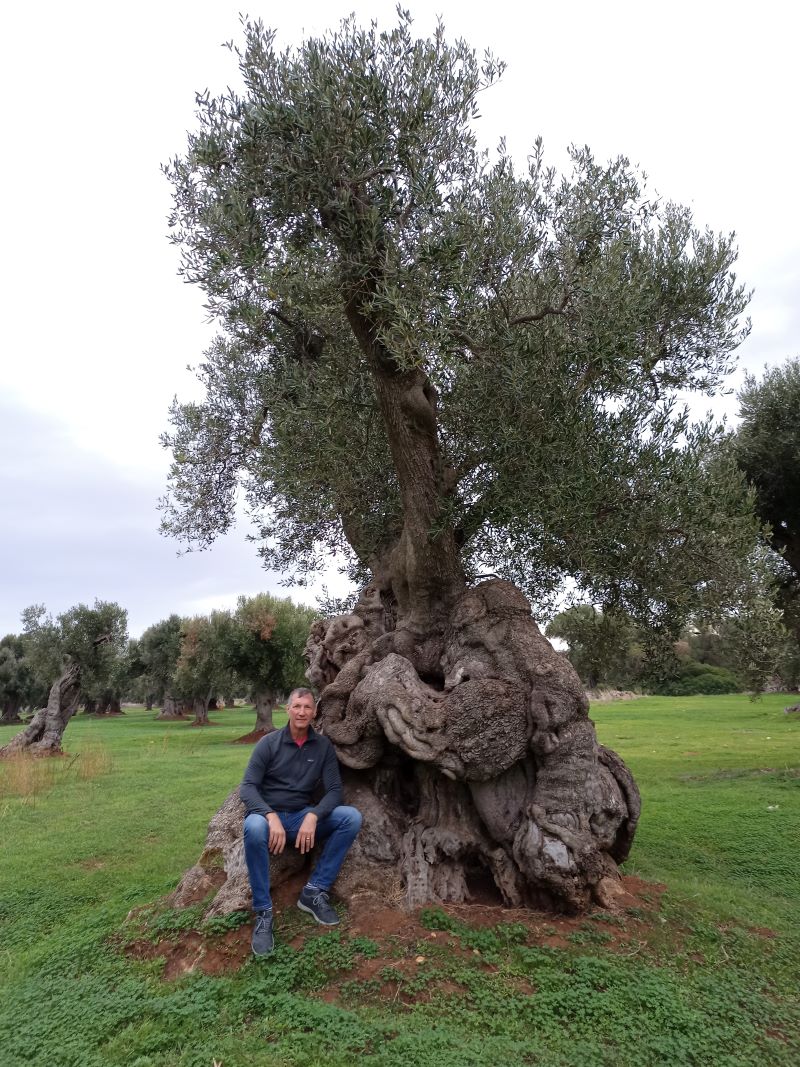
On our last day, we got going a little earlier – the crack of 8:45. We wanted to get a jump on the day and planned to stop along the coast on our way to Bari and the airport. After a relaxing cappuccino, we got in the car and started back. Our first stop, 5 minutes out of town, was on the side of the road at an olive grove. While the trees at L’Ezzenza di Puglia may have been 200 to 300 years old, several of these had to be nearing 1,000. Reaching out my arms, I could not cover one side. The trunks were gnarled and twisted, and the thought that we were wandering among trees that had been growing there for hundreds of years was waaaaay cool. (That’s me – sitting on one leg of the tree)

Back in the car, we proceeded up the coast and stopped in Polignano a Mare, a cliffside town near where we had stayed on the way south, known for beautiful waters and views of the Adriatic Sea. We wandered around for an hour exploring the Old Town, complete with the requisite window-shopping. My wife found some nice ceramic mugs that we hadn’t known we needed; as with many things we have picked up while here, they will bring back memories of our Later Gap Travel when we eventually make our way back to the States. We poked our heads down a couple of the small alleys and followed a trail of other wanderers down a little backstreet to find ourselves looking across a small bay to houses perched along the edge of the cliffs. Down another street, we saw the view that is in all the postcards of the area – a long inlet with high cliff walls on either side and a small “sandy” beach growing out of the ravine behind. The beach was empty (it was winter – locals, and tourists, were in puffy jackets, not swimsuits). The bridge behind the beach offered another nice view, and from there we decided it was time for our obligatory aperitivo.

From Polignano a Mare, we drove up to Bari to enjoy one last short stroll before we had to catch our plane. Being Sunday, parking near the water was free. That is another thing we found out, many times Sundays and holidays are free parking – the Italians love to get out and walk, and the cities encourage the habit by allowing people to park near parks and paths and enjoy a passegiari. However, being Sunday afternoon, none of the shops were open (we couldn’t even window shop). We enjoyed just wandering and getting an overview of the Old Town. It was quiet, but looked like there was quite a bit to explore (as usual). We figured, since we live here for the time, we can always fly back for a night or two to enjoy the town, the harbor, the eating, and the shopping.
That is one of the most rewarding things about being a Later Gap Traveler – since you live close, you can always come back again and visit those places that you either missed or that you really enjoyed and couldn’t get enough of; that is, until the adventure ends.
